
Final Design iPhone afocal adapter
Thursday, 2 September. During the daytime, I did a lot of analyzing of my initial iPhone afocal adapter prototype. I decided that the initial wire phone holder design just wasn't going to work to securely hold the iPhone in the proper position. So, after a lot of study and playing with different wire placements, I came up with this design (seen at the top).
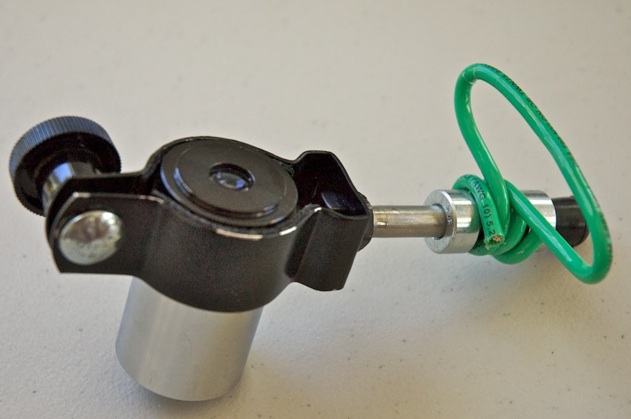
I used a 12" length of wire. The iPhone slides snugly into the loop and stays put. This concept avoids the problems I had with the initial prototype: camera lens too far away from eyepiece, iPhone not being held securely, wires sticking up making focusing with the eye difficult. I also decided to stick with one eyepiece (for now) for the iPhone afocal photography just to simplify attaching the adapter to the telescope. I have an old Meade 9mm MA eyepiece (from a Meade ETX-70AT) that wasn't getting any use (since I have a Meade Series 4000 9.7mm eyepiece). The 9mm eyepiece should be adequate for imaging with the iPhone. If I need more magnification I can use the Meade #126 2X Barlow Lens or the Meade Series 5000 3X TeleXtender with the eyepiece.
The new design images the eyepiece exit pupil almost perfectly (as seen in this daylight image through the eyepiece):
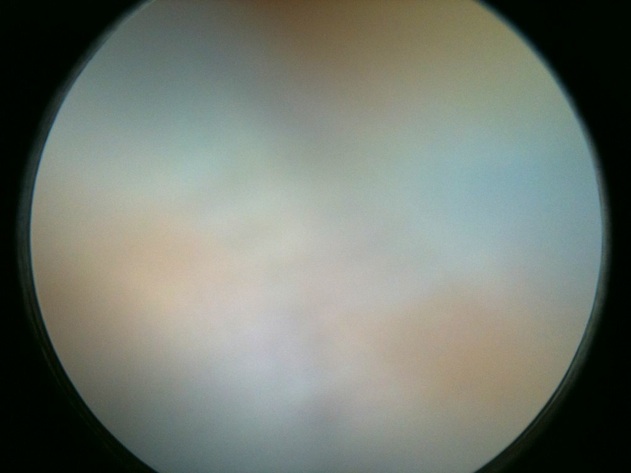
Then I had to wait for nighttime and test at the telescope. But first a comment about a reader comment. “Marc” commented on yesterday's entry that he thinks the iPhone business is a waste of time. Apple, its shareholders, and the millions of iPhone users would probably disagree. From my perspective, is it a waste of time using a very capable camera for some astro-imaging? I obviously don't think so. One could ask if it is a waste of time hosting a web site that caters to Commodore 64 users? Marc doesn't think so (the URL he noted with his comment is http://www.c64scene.nl/), but I suspect that there are those who have moved on from the Commodore 64 they had decades ago, just as I have moved on from my Apple II+ (which I still have). Hopefully, readers will find my experiments in cell phone astrophotography useful. If the only imager they have is a cell phone, why shouldn't they use it for some types of astrophotography. The results can be surprising, as you will see below.
Thursday evening, I opened the observatory at 1813 MST, 106°F, for what turned out to be an almost a 10 hour session. I first went to Venus to test the new iPhone afocal adapter design. Here you can see the iPhone attached to the telescope:
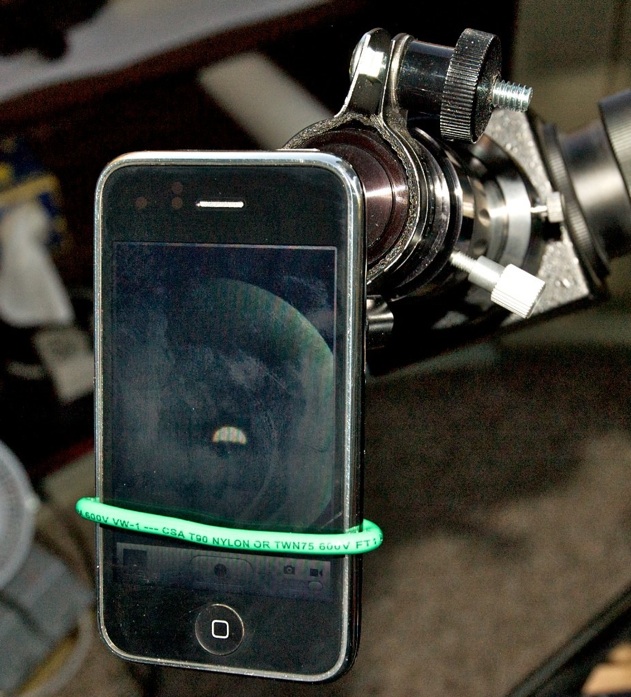
Yes, that is Venus on the iPhone screen. Here is a single frame from the video I captured through the 9mm eyepiece + 3X TeleXtender 666X):
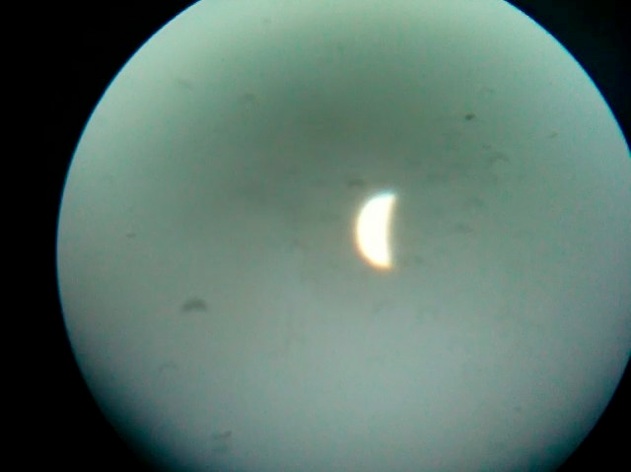
The image accurately show Venus and its current phase. The new design worked. And the iPhone can be rotated out of the way to refocus the eyepiece if necessary. The only difficulty is getting the target object centered in the camera lens. But that’s true of many camera afocal adapters. Once I had the object centered (or reasonably so), it stayed put during the imaging.
1848 MST, sunset. Viewed Saturn low in the west with 26mm and 15mm eyepieces. Could just barely see the rings in the 15mm due to the sky brightness. I then viewed Saturn in the 9.7mm but seeing was not very good with Saturn 10° above the horizon.
1928 MST, it was now dark enough to begin viewing stars. I slewed to Albireo, a fine double star. Hum, could I image it with the iPhone? Well, as those who were following me on Twitter discovered during the night when I was posting almost live images from the iPhone and telescope, the answer was “yes”. Here is Albireo through the 9mm eyepiece:
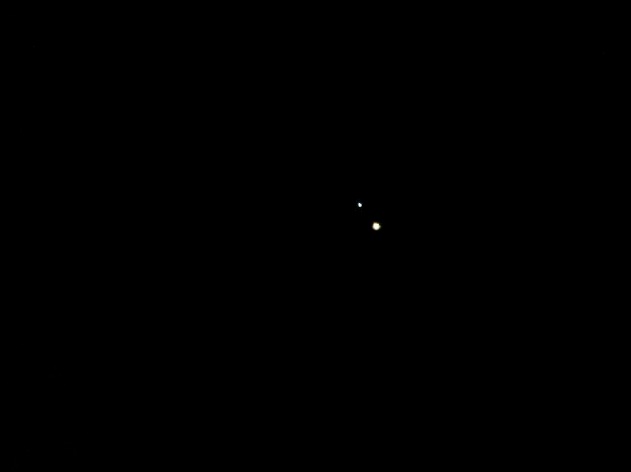
The colors (blue and yellow) are just detectable. Since Albireo worked, Mizar should be easy. And it was:
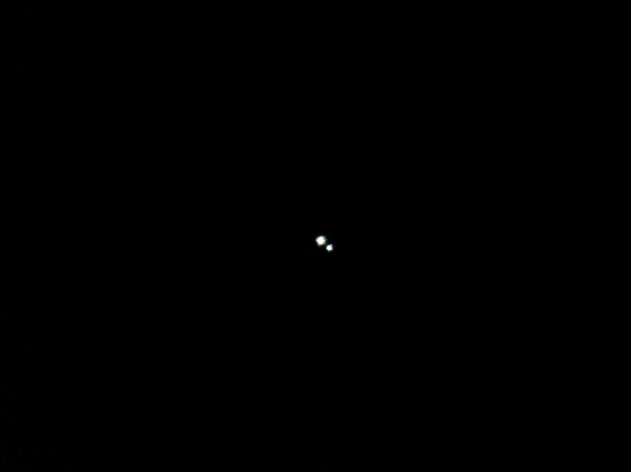
At 2000 MST, I began my other project for the night: observing double stars. Initially I tried using the “multiple stars” database in the AutoStar II. But that was a pain since the sort was alphabetical and there were so many that were not currently visible. I switched to using the “Multiple Star” table in the Rigel Systems “The Trained Sky” star atlas. The stars are sorted by Right Ascension, making it easy to observe what was currently visible. Over the next nearly 2 hours, I observed 43 double star pairs from R.A. 14h to R.A. 00h. Many were very nice, and some had very little separation.
At 2150 MST, I viewed Jupiter. It was too low in the sky at this time for good viewing with the 5.5mm eyepiece, but lots of cloud details were visible in the 9.7mm eyepiece. I would say that the South Equatorial Belt (SEB) is definitely making a comeback, at least on the side of the planet that was visible at this time. The four Galilean Moons were visible, with three on one side (as seen in this chart from SkyVoyager on my iPhone):
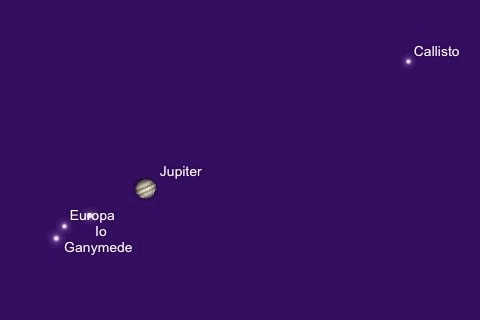
At 2210 MST, I looked at the Milky Way, which was visible running from the southwest horizon, through the zenith, down to the northeast horizon. Lovely!
2255 MST, temperature was still 78°F, and the seeing was still not very good. Added the moon filter to the 9.7mm while viewing Jupiter, and that reduced the glare from the bright planet, making cloud details easier to see.
0003 MST, added 7 more double star pairs to my observations, all in R.A. 01h. That made a total of 50 double star pairs for the night.
0050 MST, I had been observing Jupiter on and off for the past 3 hours. The planet’s rotation was very evident over that time period as the cloud patterns moved. The Great Red Spot (GRS) was to become visible in the next hour or so. And at 0117 MST, I began to wonder if I was now seeing the GRS near the planet’s limb. 0123 MST, I decided that it was indeed the GRS. Unfortunately, seeing seemed to be getting a little worse. 0151 MST, the GRS was becoming more obvious. Of course, it is not really “red”, but more a pale orange.
0200 MST, began iPhone afocal imaging of Jupiter. This frame is from a video taken through the 9mm eyepiece + moon filter. Jupiter is overexposed but three moons are visible.
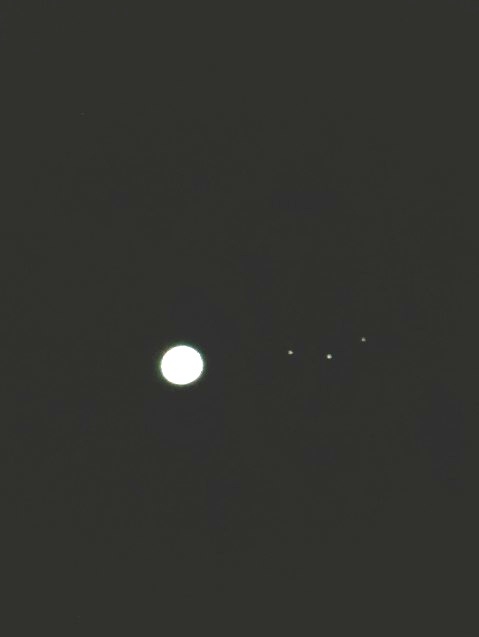
Here is Jupiter through the 9mm + moon filter + 2X Barlow Lens:
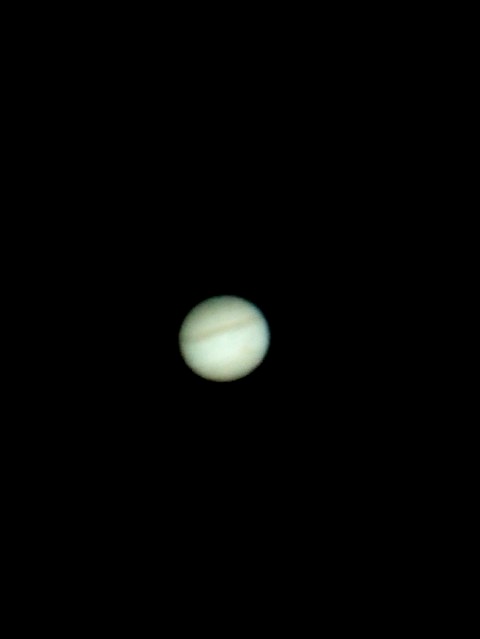
And through the 9mm + moon filter + 3X TeleXtender:
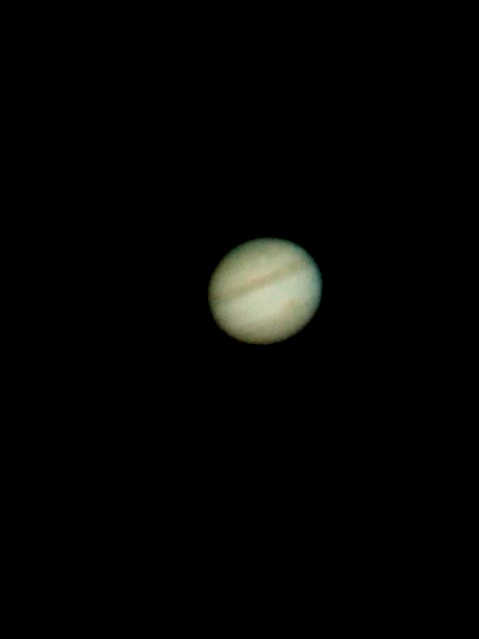
Cloud bands are clearly visible, including the NEB. And yes, the Great Red Spot is visible, below and right of the center of the disk. Amazing for a cell phone camera!
0230 MST, my night was not yet over. The moon had risen; viewed it with the 26mm and 15mm eyepieces. Picked a target for photography: Sinus Iridum, which was displaying some nice shadows. Views along the terminator were very nice in the 9.7mm and 5.5mm eyepieces. 0243 MST, began setting up for astrophotography with the D70 DSLR at prime focus. Moon at 1/100sec ISO 500:
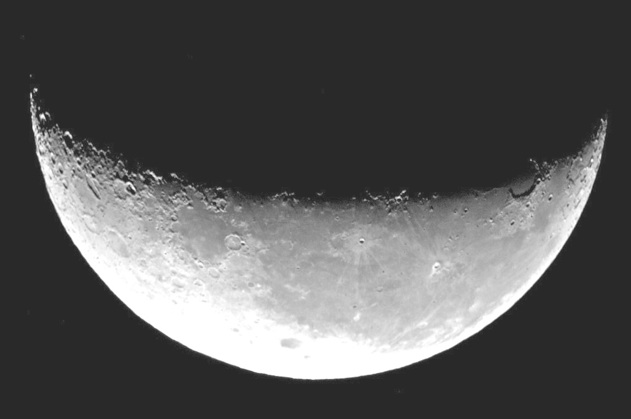
Sinus Iridum, prime focus + 3X TeleXtender, “hat trick”, ISO 640:
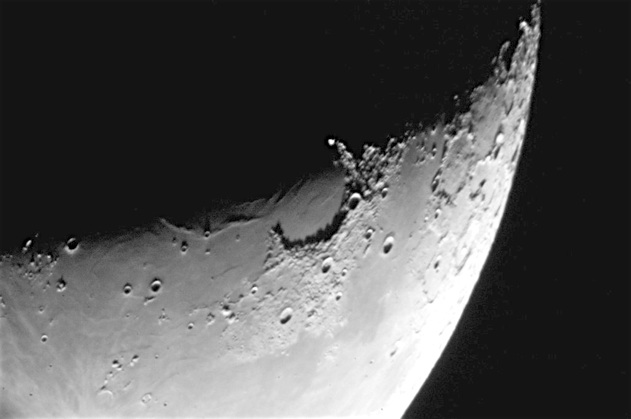
And at prime focus + 2X Barlow Lens + 3X TeleXtender, ISO 800:
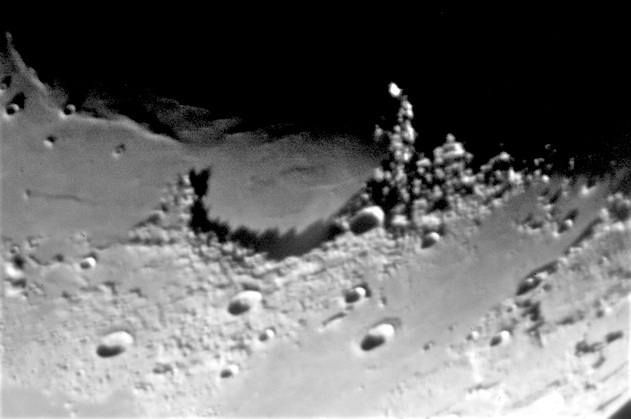
Neat shadows! I then did some more visual observing along the terminator. The views were now awesome in the 15mm + 2X Barlow Lens + 3X TeleXtender (800X). Seeing was not quite good enough for any higher magnification.
I closed the observatory at 0345 MST, 75°F. It was a fun, successful, long night.
As I approached the house I saw this little (2”) tarantula outside the door:
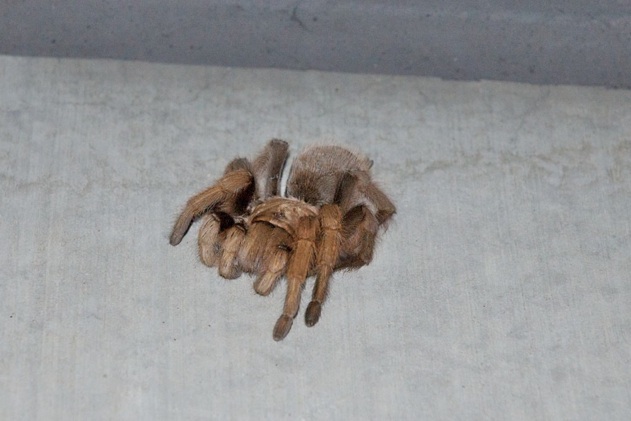
It was nearly 1 year ago that I saw the first tarantula here. September is their migration period. Unfortunately, it turned out that this one was dead. Don’t know what killed it.
Friday, September 3, 2010

